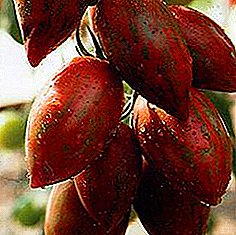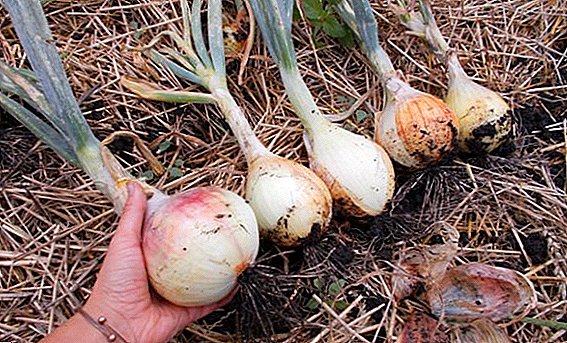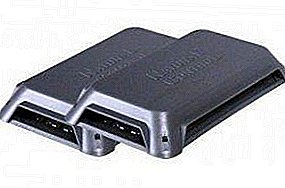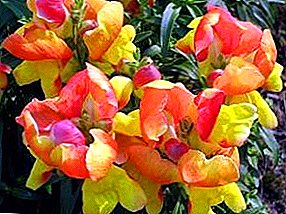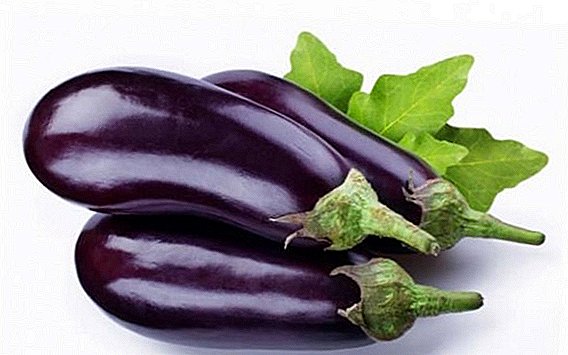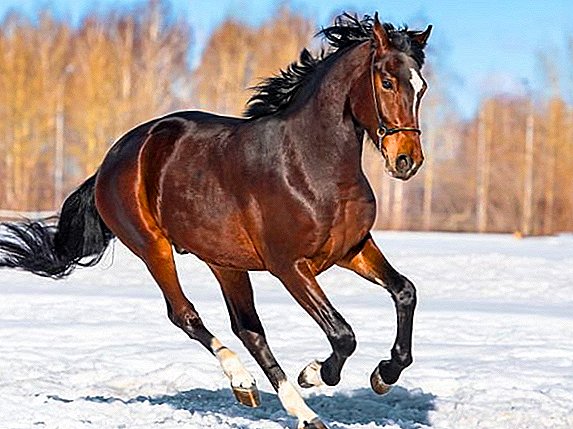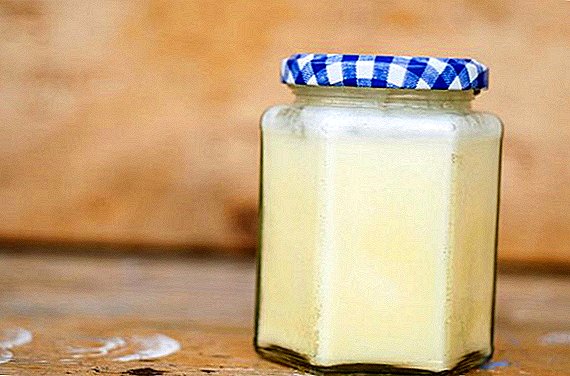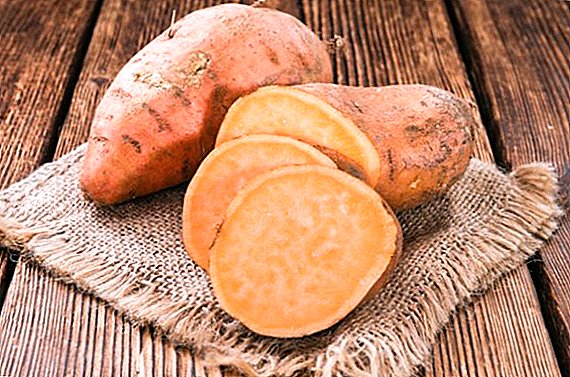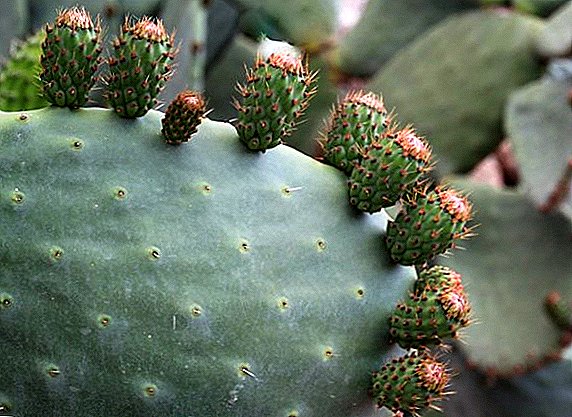 What do we know about prickly pear? The largest plant of the cacti family. It is used in food, paint is made of it, it is also used as cattle feed. Despite the fact that the homeland of this cactus is South America, some of its species have settled well in our latitudes. Why not grow such a cactus at home?
What do we know about prickly pear? The largest plant of the cacti family. It is used in food, paint is made of it, it is also used as cattle feed. Despite the fact that the homeland of this cactus is South America, some of its species have settled well in our latitudes. Why not grow such a cactus at home?
Individual hybrids can reach a height of two meters! Not quite a convenient plant for the home, but in the office the giant will take its rightful place. We will describe in detail below how to plant and how to care for the prickly pear cactus.
Did you know? Cows that feed on peeled prickly leaves give more milk.
Choosing a place for prickly pears
 Choosing a place for cactus, it is necessary to understand that the plant, taking root, must be in one place for quite a long time. Prickly pear feels well on ventilated places, basking in the sun. Cactus is not afraid of frost, but is very susceptible to excess moisture. In summer, the flower accumulates liquid in the leaves, which in the heat allows it to feel good.
Choosing a place for cactus, it is necessary to understand that the plant, taking root, must be in one place for quite a long time. Prickly pear feels well on ventilated places, basking in the sun. Cactus is not afraid of frost, but is very susceptible to excess moisture. In summer, the flower accumulates liquid in the leaves, which in the heat allows it to feel good.
Therefore, when choosing a place for prickly pear tree, take care of loose soil or good drainage. Opuntia flower can live in slightly acidic, not particularly rich soil. And if you add sand and small pebbles to it, you will minimize the risk of rotting due to stagnant water. Delightful prickly pear will look at the elevation of your front garden, surrounded by boulders and a variety of colors.
Temperature
Although prickly pear and winter-hardy cactus, the chosen place in the garden must meet the criteria: in summer it is very warm - in winter it will minimize moisture. With home growth in summer prickly pear easily adapts to any temperature. But in the winter it is desirable to maintain the temperature not higher than 6-7 degrees. When wintering outdoors, prickly pears can tolerate frost down to -10 degrees. But if it is unusual for you to leave the southern beauty in the cold, you can cover it with foliage or branches.
Did you know? Not proven, but still a fact: dogs and wolves are afraid of cacti.
Lighting
 With the home maintenance of a tree-like cactus, he needs abundant sunlight for proper growth and flowering. It is not recommended to immediately put the flower in direct sunlight, do it gradually. After transplanting to the garden should choose the sunniest place.
With the home maintenance of a tree-like cactus, he needs abundant sunlight for proper growth and flowering. It is not recommended to immediately put the flower in direct sunlight, do it gradually. After transplanting to the garden should choose the sunniest place.
Choosing dishes for planting
There is an opinion that cacti should be planted in wide and shallow (peculiar basins) vessels. The decision is not entirely correct, since many flowers can be planted in such dishes, but because of the small depth the soil will dry out quickly.
For planting prickly pears, you can choose almost any flower pots. The most important factor: you need a hole at the bottom for drainage. This may be several small holes or one about 0.5 cm.
If you want to put a flower on the furniture and do not want the flow of water, you can arrange a drainage of stones at the bottom of the pot. Choosing a pot, you can regulate the growth of a cactus, preventing its roots from growing or vice versa.
Substrate for the prickly pear plant
For planting prickly pears in pots, it is necessary to prepare the soil for it. For seed planting and cuttings, substrates are different. For planting by the cutting method, a drainage layer is laid out on the bottom of the dish, and sand and charcoal are poured from above. Sand before it is desirable to ignite.
Planted seeds also need drainage. Then a mixture of calcined sand, charcoal and compost is prepared. Mixed in a ratio of 1: 1: 2.
Important! If you do not want to burden yourself with the preparation of the substrate, you can buy a special mixture for cacti.
Planting, reproduction and transplant of Opuntia plants
Tree cactus can be propagated in two ways: by seeds or cuttings. For planting cactus it is necessary to prepare the soil, which we wrote about above. Opuntia transplantation can occur at any time of the year. The main reason for cactus transplantation is a cramped pot. It is necessary to transplant a prickly pear when the soil dries. For the first two weeks put in the shade a few days to refrain from watering.
With the help of cuttings
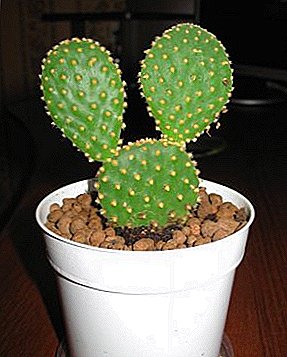 Root cuttings of prickly pears should be in the period from spring to mid-summer. Regrown shoots should be carefully separated from the plant, treating the cut sites with crushed coal. Dry the separated cuttings for several days until a thick film is formed at the cut point.
Root cuttings of prickly pears should be in the period from spring to mid-summer. Regrown shoots should be carefully separated from the plant, treating the cut sites with crushed coal. Dry the separated cuttings for several days until a thick film is formed at the cut point.
After which the processes are immersed by 2-3 cm in a prepared substrate. The container is covered with a glass lid or film. The temperature in this greenhouse should be about 10 degrees. Maintain moisture in the container by spraying the cuttings from the sprayer. It is also necessary to regularly air the cactus. After the prickly pear root becomes stronger, the flower can be transplanted into pots.
Important! In extreme cases, the cuttings can be grown just in the calcined sand.
Seed method
When planting seed method first thing you need to prepare the seeds. Cactus seeds are quite solid. You can soften them in two ways: soak in water for several days or process a hard shell with sandpaper. To kill germs, soak the seeds for 15-20 minutes in a weak solution of manganese. Prepared seeds are deepened into the substrate, maintaining a temperature of 20 degrees. Seeds also need airing and moistening. As soon as sprouts appear, the prickly pear should be transplanted into separate pots.
Plant Care
 After planting, the question arises: how to care for the cactus? Opuntia is an unpretentious flower and does not require much attention. Provide more light and water as needed, here, in fact, the whole care. Top dressing can be made only during flowering. The inconvenience in the care of the cactus - its spines. They are quite small, it is very difficult to see them. If you have invisible splinters on your hands, ordinary soap and warm water will come to your rescue.
After planting, the question arises: how to care for the cactus? Opuntia is an unpretentious flower and does not require much attention. Provide more light and water as needed, here, in fact, the whole care. Top dressing can be made only during flowering. The inconvenience in the care of the cactus - its spines. They are quite small, it is very difficult to see them. If you have invisible splinters on your hands, ordinary soap and warm water will come to your rescue.
Did you know? In ancient Greece, the word "cactus" was called any prickly plant. Hence its name.
Watering prickly pears
As mentioned above, the prickly pear does not require regular watering. Watering cacti at home in the summer and autumn should be carried out as the soil dries. In winter, at a temperature of about 6 degrees, you can not water it at all. During the winter, it may wilt slightly, but with the first spring watering it will quickly return to normal.
Fertilizer and dressing
Fertilize prickly pear can begin in the spring, continuing to feed all summer. Excellent fertilizer with a low nitrogen content. The breaks between them should be about two weeks. If your soil lacks acidity, then watering can be diluted with water a few drops of lemon juice or citric acid. If you feed the cactus correctly, it will delight you with beautiful and big flowers.
Important! During flowering must stop all feeding.
Prickly pear blossoms
 At home cultivation prickly pear rarely pleases with its flowering. To achieve flowering at home, it is necessary to ensure optimal conditions for it. After the frost subsides, it is advisable to take the flower to fresh air and sunlight. These two requirements are required for flowering cactus.
At home cultivation prickly pear rarely pleases with its flowering. To achieve flowering at home, it is necessary to ensure optimal conditions for it. After the frost subsides, it is advisable to take the flower to fresh air and sunlight. These two requirements are required for flowering cactus.
Opuntia can bloom from April to September. Buds - up to 10 cm in diameter, most often bright yellow or red. Prickly pear fruits ripen in mid-summer. At first they look like green bumps, increasing in size over time. When ripen, become maroon. When flowering, the prickly pear exudes a very pleasant smell.
Important! Never move the pot during flowering. Prickly pear can discard its petals.
Problems in the cultivation of prickly pears
Growing a flat and long cactus, gardener may encounter some problems. If you observe a wrinkled top, and the base of the stem begins to rot, then moderate watering at a low temperature. But if the shape of the stem is irregular, this may be due to lack of sunlight or improper temperature conditions in winter. With a lack of nutrients, the appearance of gains is inhibited.
Pests and prickly pear diseases
 Prickly pear - one of the most picky plants. Quite a common disease in cacti - fungus. If dark spots or mold began to appear on the flower, it is necessary to get rid of such a flower, and process the rest with a fungicide.
Prickly pear - one of the most picky plants. Quite a common disease in cacti - fungus. If dark spots or mold began to appear on the flower, it is necessary to get rid of such a flower, and process the rest with a fungicide.
The prickly pear root may also suffer. If there are slight swellings on the roots, then this is infection by root nematodes. To combat them, it is necessary to remove the bulges and immerse the roots in warm water for 10 minutes, then treat with crushed charcoal and plant in fresh soil.
You can also see aphids on the prickly pear, spider mite or whitefly. All these pests are cleaned with special fungicides. If you provide prickly pears with proper care, many problems can be avoided.


